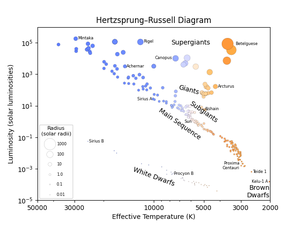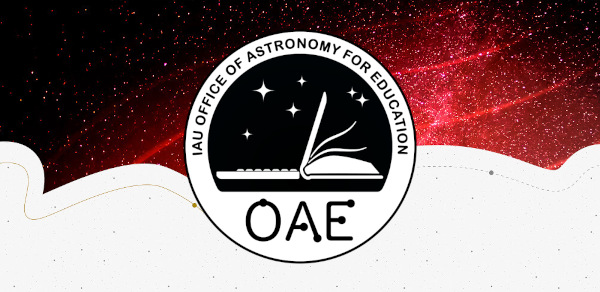Glossary term: Luminosity Class
Description: The intrinsic brightness of a star depends on its temperature and physical size. Hotter stars are brighter, as are larger stars. Spectral type categorizes stars based on the appearance of their spectral lines. This roughly follows changes in temperature. The luminosity class categorizes stars based on how bright they are compared to other stars of their spectral type. Roman numerals are used to denote luminosity class: Stars on the main sequence burning hydrogen are classified as dwarfs (V). As an example, the class of the Sun is G2 V. Above these lie (in order of increasing size and brightness) subgiants (IV), giants (III), bright giants (II), and supergiants (Ib for less luminous and Ia for the most luminous). All of these are types of evolved stars that have finished burning hydrogen in their core. Metal poor subdwarfs are hydrogen burning stars with a low metal content that lie below the main sequence. Finally white dwarfs (stellar remnants) lie further still below the main sequence.
Related Terms:
- Dwarf Star
- Giant Star
- Hertzsprung–Russell (HR) Diagram
- Spectral Type
- Supergiant Star
- Subdwarf Star
- Subgiant Star
See this term in other languages
Term and definition status: This term and its definition have been approved by a research astronomer and a teacher
The OAE Multilingual Glossary is a project of the IAU Office of Astronomy for Education (OAE) in collaboration with the IAU Office of Astronomy Outreach (OAO). The terms and definitions were chosen, written and reviewed by a collective effort from the OAE, the OAE Centers and Nodes, the OAE National Astronomy Education Coordinators (NAECs) and other volunteers. You can find a full list of credits here. All glossary terms and their definitions are released under a Creative Commons CC BY-4.0 license and should be credited to "IAU OAE".
Related Diagrams
Hertzsprung-Russell diagram
Credit: IAU OAE/Niall Deacon
License: CC-BY-4.0 Creative Commons Attribution 4.0 International (CC BY 4.0) icons









